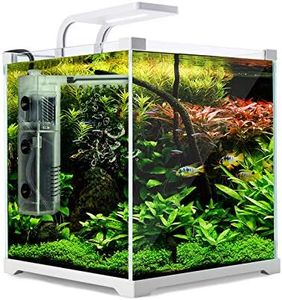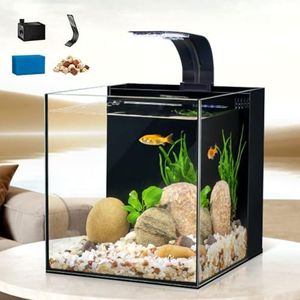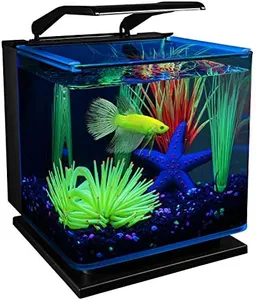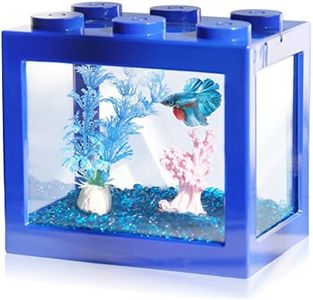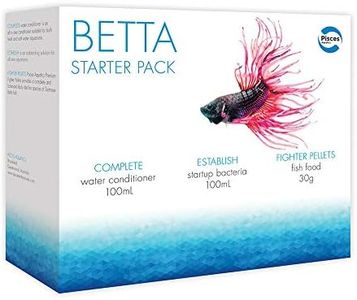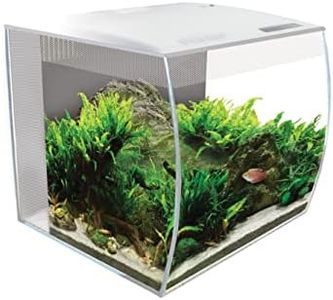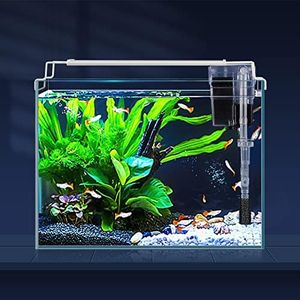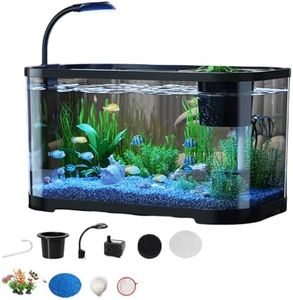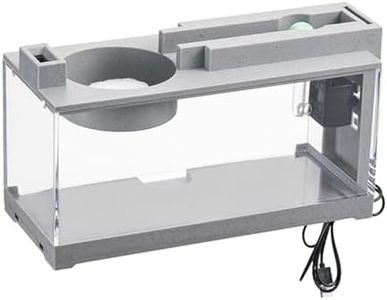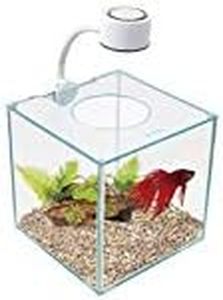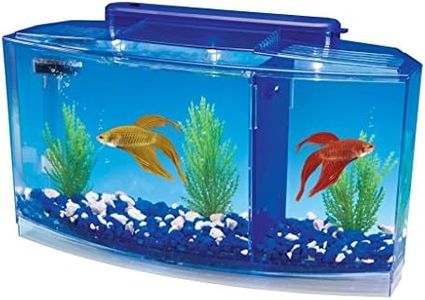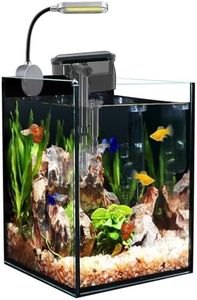We Use CookiesWe use cookies to enhance the security, performance,
functionality and for analytical and promotional activities. By continuing to browse this site you
are agreeing to our privacy policy
10 Best Aquarium Starter Kits
From leading brands and best sellers available on the web.By clicking on a link to a third party's website, log data is shared with that third party.
Buying Guide for the Best Aquarium Starter Kits
Choosing the right aquarium starter kit is an exciting first step into the world of fishkeeping. It's important to find a kit that's well-matched to your goals, space, and commitment level. Starter kits are designed to include many of the basic essentials you’ll need. When comparing options, consider both the components included in the kit and the size or type that fits your lifestyle. Think about the kinds of fish or aquatic life you wish to keep, as their needs may vary. Durability, ease of maintenance, and room for upgrades are all factors that will contribute to a successful and enjoyable aquarium experience.Tank Size (Gallons or Liters)Tank size refers to the volume of water the aquarium can hold. This is important because it determines how many fish or aquatic creatures you can keep and influences how stable the water conditions will be. Typically, smaller tanks (under 10 gallons or about 40 liters) are suitable for very few or small fish and are often best for beginners who want low maintenance. Mid-sized tanks (10-20 gallons) are more forgiving of small mistakes and can accommodate more fish, making them popular for families or anyone who wants a livelier tank. Larger tanks (over 20 gallons) allow for more species and a more stable environment but require more space and planning. Choose a size based on the kinds of pets you wish to keep, the space you have available, and how much time you want to spend on maintenance.
Included Filtration SystemThe filtration system included in a starter kit is responsible for cleaning the water by removing waste, debris, and toxins. A good filter keeps your fish healthy and reduces maintenance. Basic kits may include simple sponge or hang-on-back filters suitable for small tanks and low bioloads (few or small fish). More advanced kits offer multi-stage filters that process larger amounts of waste and provide better water quality for bigger or more populated tanks. When choosing, look for a filtration system that matches or slightly exceeds the tank size and consider if the filter media is easy to replace. Think about how many fish you intend to keep and choose a kit with a filter that can handle their needs.
LightingLighting is included to support visibility and sometimes plant growth, as well as to highlight colors in your tank. Some kits come with basic LED lights that are sufficient for viewing fish, while others may offer brighter or adjustable lighting ideal for live plants. If you plan to keep only fish or decorative ornaments, standard lighting is usually enough. If you want live plants or wish to view your tank at night, consider kits with special or customizable lighting features. Match the lighting options to your intended use and species.
Heater InclusionA heater maintains stable water temperatures, which is crucial for tropical fish. Some starter kits may include a heater, while others do not. If you plan to keep tropical species, a heater is essential to prevent stress or illness; for cold-water species, you may not need one. Check what type of aquatic life you want and whether your home’s ambient temperature fluctuates—if your chosen animals need consistent warmth, opt for a kit that includes a heater or has room for one to be added.
Build Material (Glass vs. Acrylic)Aquarium tanks are usually made of glass or acrylic. Glass is heavier but more scratch-resistant, and often less expensive. Acrylic is lighter and less likely to crack, but scratches more easily. Smaller tanks are commonly acrylic because they are easier to move, while larger tanks are often glass for their durability and clarity. Choose the material based on your needs for portability, strength, and appearance.
Accessories (Net, Water Conditioner, Food, Decor)Many starter kits include extras like fish nets, water conditioners, sample foods, or decorative items. These accessories make starting your aquarium more convenient, letting you set up and maintain your tank easily from day one. The more comprehensive the set, the easier it will be for you to get started without making additional purchases. Consider what’s included and what you may need immediately, but remember you can always add more accessories based on your aquatic goals.
Ease of Assembly and MaintenanceSome kits are easier to set up and care for than others. User-friendly designs with clear instructions and easy-to-clean parts make a big difference, especially if you’re new to fishkeeping. Kits aimed at beginners usually have simple, straightforward setups, while more advanced kits may require extra effort. If you’re looking for a no-fuss start, look for kits marketed as beginner-friendly or with highly rated instructions and support resources.
